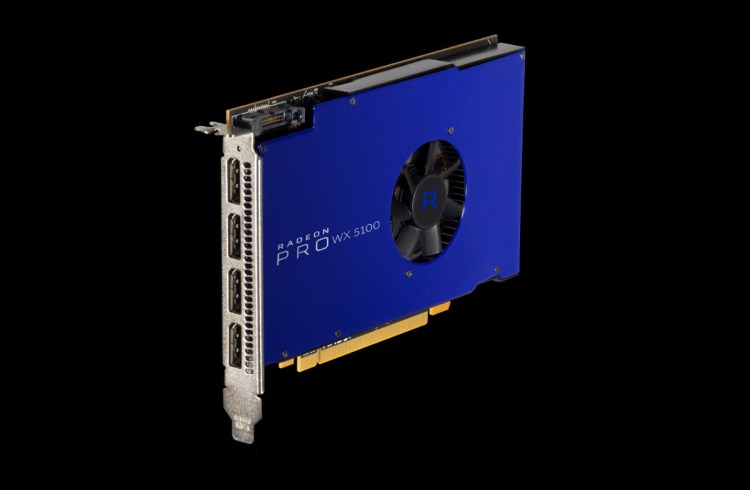Advanced Micro Devices unveiled its new Radeon Pro WX series of graphics cards for professional workstation users. The move came hours after graphics chip rival Nvidia revealed what it called the “world’s fastest GPU” (graphics processing unit) for workstations.
AMD’s new chips are based on its newly launched Polaris graphics chip architecture, and they’re targeted at 10 million artists, designers, and engineers. The company announced the pro graphics cards at the Siggraph graphics technology conference in Anaheim, Calif.
AMD’s Raja Koduri, senior vice president and chief architect, Radeon Technologies Group at AMD, said in an interview with GamesBeat that AMD took a step back and evaluated its strategy for the workstation market, which stands at a “transformational inflection point.” He noted that game engines have become real-time when it comes to rendering images as they are being created. Virtual reality is on the rise, and it takes more horsepower to render the images. New applications programming interfaces (APIs) such as DirectX 12 and Vulkan require special attention, and more tools and applications are being released as open source software.
“This is our first step, and we have some exciting products in both hardware and software,” Koduri said. “We want our products to be used to create content for AR and VR.”
AMD’s new Radeon Pro WX Series of professional graphics cards is targeted at each one of these points, so that professionals can create their art in an environment that is open and non-proprietary, Koduri said. The new chips include the Radeon Pro WX 7100 GPU, the 5100, and the 4100.
“Open source software has become a main strategy for our professional graphics users,” Koduri said. “This is the first step in our roadmap around these inflection points.”
All three products are expected to be available in the fourth quarter of 2016. While Nvidia may claim the fastest speed, Koduri said AMD would remain ahead in performance per dollar metrics. He said the company is showing 8K video processing at 90 hertz in a demo at Siggraph.
“With Radeon Pro, AMD has crystalized a clear strategy to drive the democratization of content creation,” said Jon Peddie, president and founder of Jon Peddie Research, in a statement. “By offering highly capable graphics hardware and harnessing the best open source software, whether from AMD or contributors worldwide, they are effectively building a huge ecosystem to address the demanding challenges faced by graphics application designers.”
AMD has also launched its ProRender rendering technology, which can balance the computing power of multiple graphics chips and processors at the same time. AMD moved ProRender from a proprietary technology to GPUOpen, making it open source for developers.
The new graphics chips are based on AMD’s Polaris architecture, which is based on 14-nanometer FinFET manufacturing (which delivers faster, smaller, and cheaper chips).
VentureBeat's mission is to be a digital town square for technical decision-makers to gain knowledge about transformative enterprise technology and transact. Learn More

